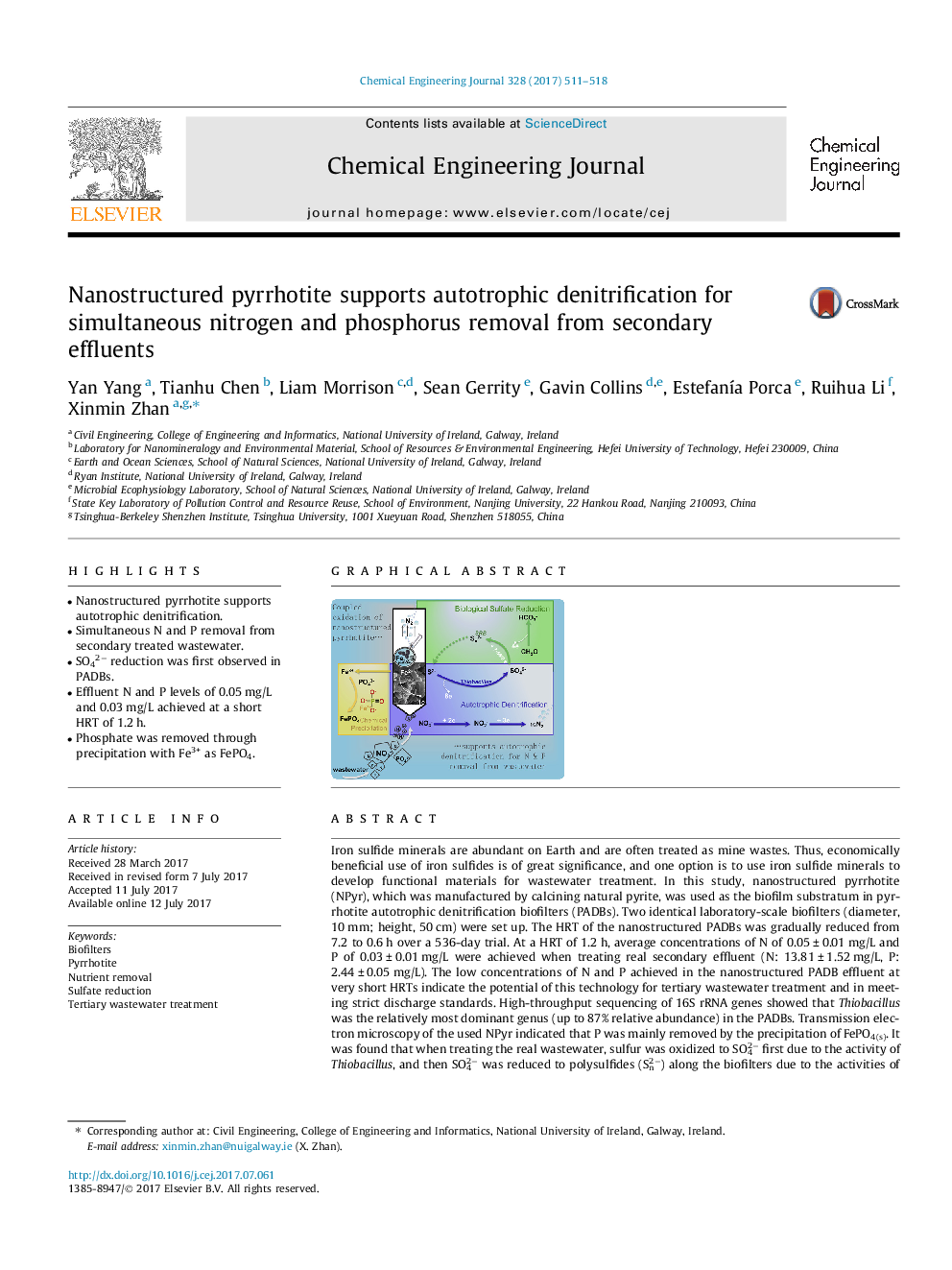| کد مقاله | کد نشریه | سال انتشار | مقاله انگلیسی | نسخه تمام متن |
|---|---|---|---|---|
| 6465255 | 1422950 | 2017 | 8 صفحه PDF | دانلود رایگان |

- Nanostructured pyrrhotite supports autotrophic denitrification.
- Simultaneous N and P removal from secondary treated wastewater.
- SO42â reduction was first observed in PADBs.
- Effluent N and P levels of 0.05Â mg/L and 0.03Â mg/L achieved at a short HRT of 1.2Â h.
- Phosphate was removed through precipitation with Fe3+ as FePO4.
Iron sulfide minerals are abundant on Earth and are often treated as mine wastes. Thus, economically beneficial use of iron sulfides is of great significance, and one option is to use iron sulfide minerals to develop functional materials for wastewater treatment. In this study, nanostructured pyrrhotite (NPyr), which was manufactured by calcining natural pyrite, was used as the biofilm substratum in pyrrhotite autotrophic denitrification biofilters (PADBs). Two identical laboratory-scale biofilters (diameter, 10 mm; height, 50 cm) were set up. The HRT of the nanostructured PADBs was gradually reduced from 7.2 to 0.6 h over a 536-day trial. At a HRT of 1.2 h, average concentrations of N of 0.05 ± 0.01 mg/L and P of 0.03 ± 0.01 mg/L were achieved when treating real secondary effluent (N: 13.81 ± 1.52 mg/L, P: 2.44 ± 0.05 mg/L). The low concentrations of N and P achieved in the nanostructured PADB effluent at very short HRTs indicate the potential of this technology for tertiary wastewater treatment and in meeting strict discharge standards. High-throughput sequencing of 16S rRNA genes showed that Thiobacillus was the relatively most dominant genus (up to 87% relative abundance) in the PADBs. Transmission electron microscopy of the used NPyr indicated that P was mainly removed by the precipitation of FePO4(s). It was found that when treating the real wastewater, sulfur was oxidized to SO42â first due to the activity of Thiobacillus, and then SO42â was reduced to polysulfides (Sn2â) along the biofilters due to the activities of sulfate reducing bacteria. This observation highlights that the nanostructured PADB technology might be operated in a way of sustainable use of sulfur as an electron donor.
134
Journal: Chemical Engineering Journal - Volume 328, 15 November 2017, Pages 511-518